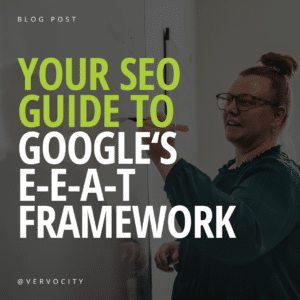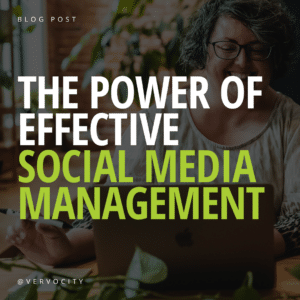It’s inevitable – your business needs copywriting to compete in the online world. From website copy to blogs to social media posts, you’re bound to come across digital platforms that require written content.
So how do you use these platforms to create compelling content that attracts customers and generates results?
One of the most important copywriting rules is to write for your target audience. Know who your target audience is and what they want to know before you begin copywriting. By focusing on content that meets the needs of your customers, you’ll be closer to generating a high-quality content marketing strategy.
Even with your audience in mind, we know writing unique, effective content can be difficult. We’ve put together content creation guidelines you need to know to help get you started.
1. Identify your topic
This first step may seem like an obvious one. However, when writing content, it is important to choose a topic that isn’t too broad. Try focusing on a niche or specific service, product, issue, or solution your readers would be interested in. Establish a clear beginning and end to the content, and don’t stray too far away from a single topic between those. Content should flow from one paragraph to another. Too much varying information about too many topics can make the content appear jumbled. You don’t want your readers to get whiplash from moving too quickly between topics. By choosing a specific, narrow topic and sticking to it, you can expand upon valuable information for your readers.
2. Know your content category
Digital content is written for all kinds of sources. Web copy, blog posts, instructional how-to’s, case studies, social media posts, and e-books are all examples of digital content writing. Each has their own parameters and general guidelines for creation. Know which content type you’re writing for, and look up examples within that category. Use those examples as suggestions for variations such as length, word count, structure, tone of voice, and more. Feel free to get creative, but keep an open mind about content category strategies that have worked in the past.
3. Choose a headline
On average, you have 60 characters or less to capture your audience’s attention with a headline. The headline is the first thing readers see, and it is important to make a good first impression.
Some examples of popular headlines include:
- Lists. Example: 3 Ways to Boost Your Instagram Engagement
- How-to’s. Example: How to Optimize Your Google Business Profile
- Instructional phrases. Example: Content Creation Guidelines You Need to Know
- Resources. Example: Why Your Website Needs Strong Passwords
- Frequently asked questions. Example: What Makes a Landing Page Effective?
Headlines should provide detail about what your content includes, without giving away the whole story. They should be just long enough to capture the attention of your audience while still leaving room for intrigue.
4. Do your research
Even if you are an expert in your field, it is important to do research before writing content. You don’t want to miss including information that could be valuable to your readers. We suggest three types of research for content writing.
Target Audience Research
What does your audience want to know about the information you’re writing about? What are some commonly asked questions about your industry? Whenever you write content, you want to make sure you’re writing for your customers. Don’t only include details or advice you want them to know, but also include what you’ve learned they want to know. Research popular keywords about your topic or phrases people are searching related to your industry. Ask your own customers what questions they had before working with your brand. Find out things they want to learn more about. Target audience research is a great way to learn more about the needs of potential customers while connecting with current ones.
Industry/Topic Research
If you’re writing about a topic you’re familiar with but could learn more about, research what others have written. You want to establish trust with your readers as they read your content. If someone in the same industry reads your content and identifies misinformation, they won’t trust what you publish in the future. Customers don’t want to be misinformed, either. If you have any questions while you’re writing, do some research, either online or through others in the industry, to double check that you have the facts.
Competitor Research
Learn what your competitors are saying about your topic. Not only could you learn a new way of thinking about a subject, but you can also avoid writing about the exact same thing. Take what your competitors say into consideration while creating content that is unique to your brand.
5. Create an outline
Take a moment to reminisce back on your high school days when your English teacher required you to turn in an outline before writing an essay. Do you remember the outline making it easier to write the essay? Even if you only have negative feelings about the days of homework, outlines are still valuable tools for writing content.
Outlines create structure for content by breaking it down into sections. Content becomes a map with each sub-point flowing into the next. For example, for this blog post, we created a list of eight sections we knew to include in the content. Then, we created one to two subsections for each of the main sections. This helps ensure information is presented linearly and nothing important is left out.
6. Encourage an action
Instructional and ‘how-to’ blog posts are obvious content pieces that encourage readers to take action. However, any content you write should engage your audience. Include tips or tricks that your audience might want to share with others or save for later. Cover valuable information that readers are likely to forget off the top of their head so they bookmark your page or website. Encouraging an action doesn’t mean only telling readers what they need to do within your content, but also encouraging them to take action by sharing or saving your content.
7. Include your own examples
Trust is a huge part of resonating with customers and helping you stand out against the crowd. By including your own examples within content, you’re showing the audience that you ‘practice what you preach.’ It’s easy to tell others what they should do, but you should also show that you follow your own tips, guidelines, or information, too.
8. End with a conclusion
Your content should have a clear end that wraps up the information you’ve presented. Don’t leave audiences feeling dissatisfied by not receiving a clear end. For example, think of a movie. Have you ever watched a movie that seemed to end abruptly and didn’t answer obvious questions that arose throughout the film? Don’t give your audience that same feeling with your content.
Conclusions are also opportunities to include a call-to-action. A call-to-action encourages your audience to complete an act. Do you want people to sign up for your information to learn more about topics each week? Do you want people to contact you about a specific service or product? Let your audience know what their next step should be after reading your content.
By following these guidelines, you’ll be on your way to creating effective content in no time. Take your time, do your research, and try to stick to one topic at a time. Always remember, you’re writing for your target audience, not yourself.
Are you struggling with creating content for your business? At Vervocity, our content writers are in-house and ready to help create compelling content that drives results. Contact us online or give us a call at (217) 222-1451 to get started!










